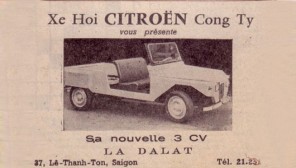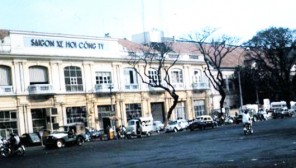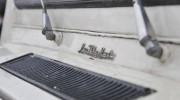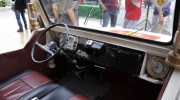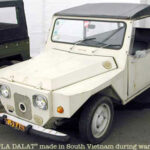Established in 1970, La Dalat is the first locally assembled passenger car in Vietnam with a localization rate of up to 40%.
>> In 1943, people in Hanoi were already driving convertibles
>> What cars did people in Hanoi drive in the 90s?
>> Before 1975, what cars did people in Saigon drive?
Over 40 years ago, the “Made in VN” car was already there
Almost half a century ago, people in the South were familiar with French products from the colonial period, so cars were usually European-made. By the mid-1960s, with the influx of motorcycles from Japan: Honda, Suzuki, Yamaha, Japanese cars also entered the Vietnamese market.

French-made cars were not appealing to consumers, except for the Citroën 2CV. Therefore, Citroën Vietnam decided to introduce a practical and affordable car that Japanese car manufacturers could not compete with. That car was the La Dalat.
Prior to that, Citroën had established a workshop in Indochina in 1936, with its headquarters originally located at the corner of Le Loi Street and Nguyen Hue, which is now the Rex Cafe in Saigon. Under the old regime, it was relocated and renamed as Citroën Automobile Company, later becoming Saigon Automobile Company at its current location, Diamond Plaza (Ho Chi Minh City).
Based on the design of the successful Méhari and Babybrousse models in the former colonies, Citroën imported key parts such as the engine, steering wheel, suspension, brakes… while the lights, horn, seats, sheet metal body, convertible top… were manufactured in Vietnam.
When it was launched on the market in 1970, the import-to-local ratio was 75/25, by the final year when Citroën closed in 1975, it was 60/40. There were a total of 4 types of La Dalat: 4-seater or 2-seater with cargo space.
Durable and Fuel Efficient
After World War II, to meet the transportation needs of the contemporary French people, Citroën produced the 2CV car. From this type of car, Citroën successfully manufactured an economical, durable, easy-to-maintain and repair, practical car for the post-war population. This was followed by the Citroën Dyane 6 and Méhari models produced in the late 1950s and early 1960s.

The Vietnamese-produced Citroën La Dalat was a car based on the Citroën Méhari model, part of Citroën’s technical cooperation plan for automobile mechanics and countries intending to produce domestic transportation means, which Citroën referred to as the FAF (Facile À Fabriquer, Facile À Financer = Easy To Manufacture, Easy To Finance) cooperation plan.
The La Dalat used a 4-stroke, 602 cc engine producing 31 horsepower, with 2 opposing cylinders positioned flat (flat twin), a 4-speed manual transmission, and front-wheel drive. The car had dimensions of 4,003 mm x 1,530 mm x 1,540 mm (length x width x height). The first model produced in Vietnam had a weight of about 480 to 590 kg (depending on the type), with the van type weighing 770 kg.
The La Dalat car met the demands of Vietnamese laborers: low fuel consumption, easy repairs, easy part replacements. Moreover, some parts such as doors, windows, cargo compartments… could be “self-made”. Spare parts were sold at affordable prices because they were manufactured in Vietnam.
Today, when many automakers have built factories in Vietnam, few people know that La Dalat was the first car model to be produced and assembled here.
According to Khanh An (Urban People)





























